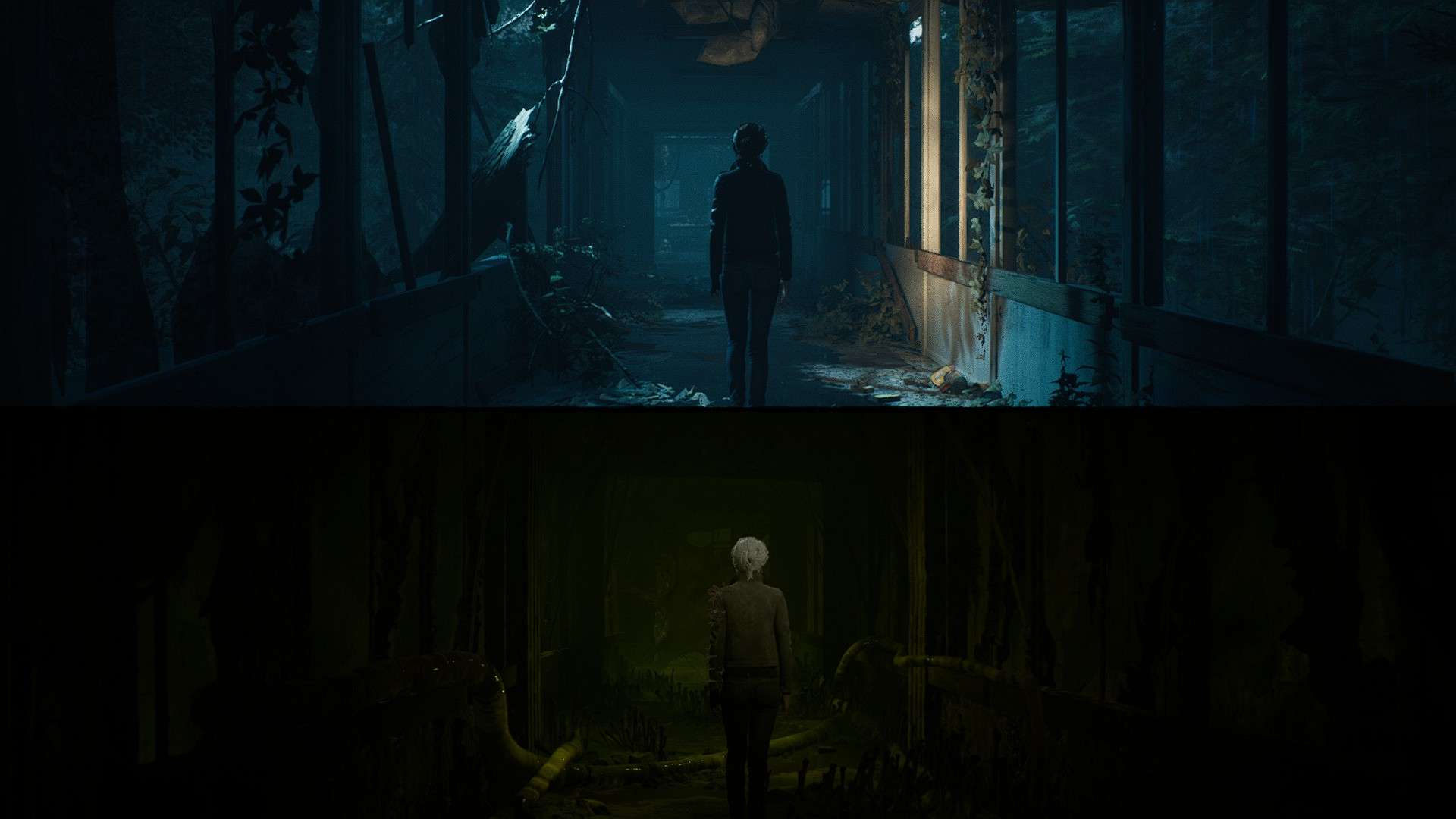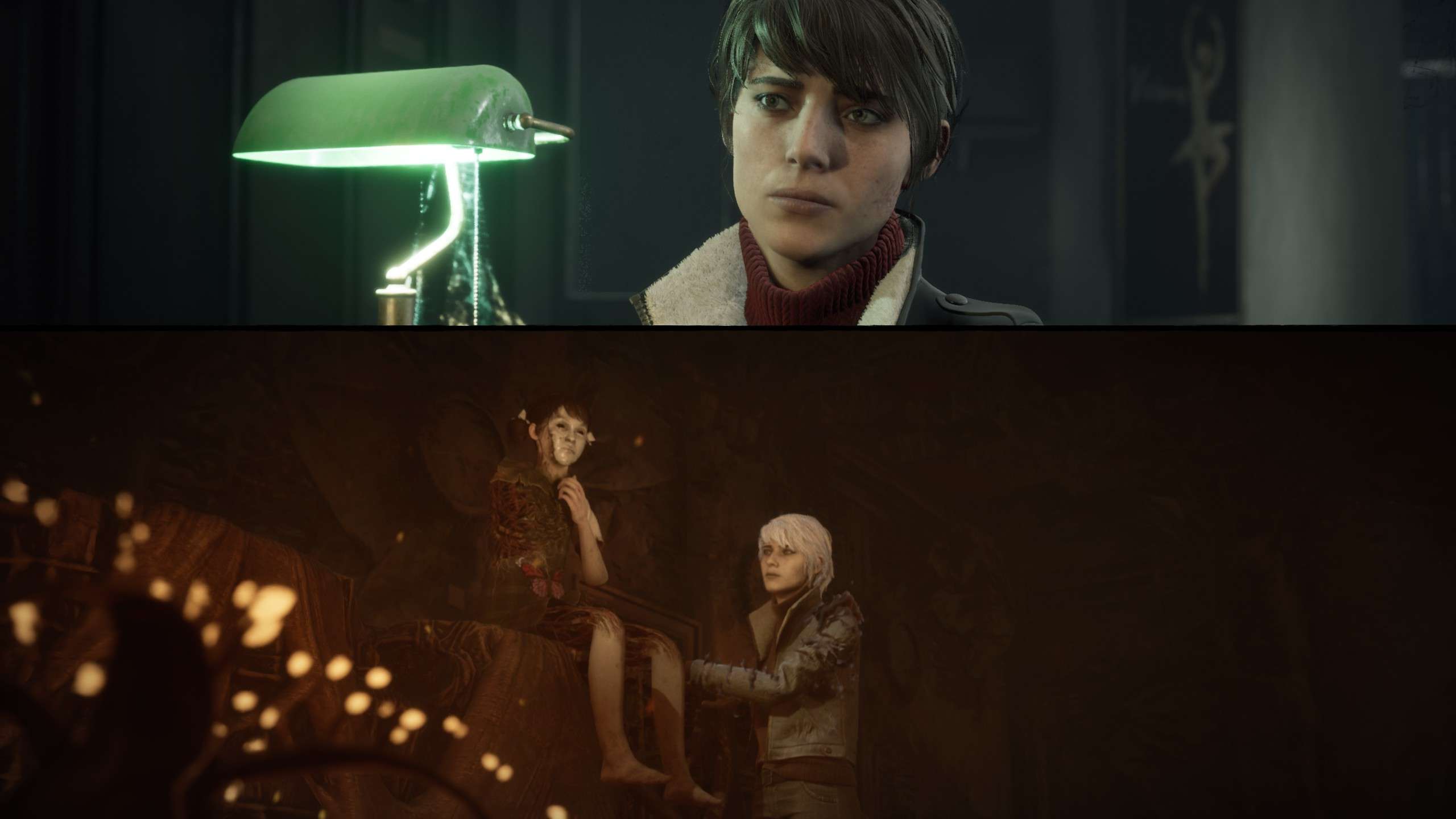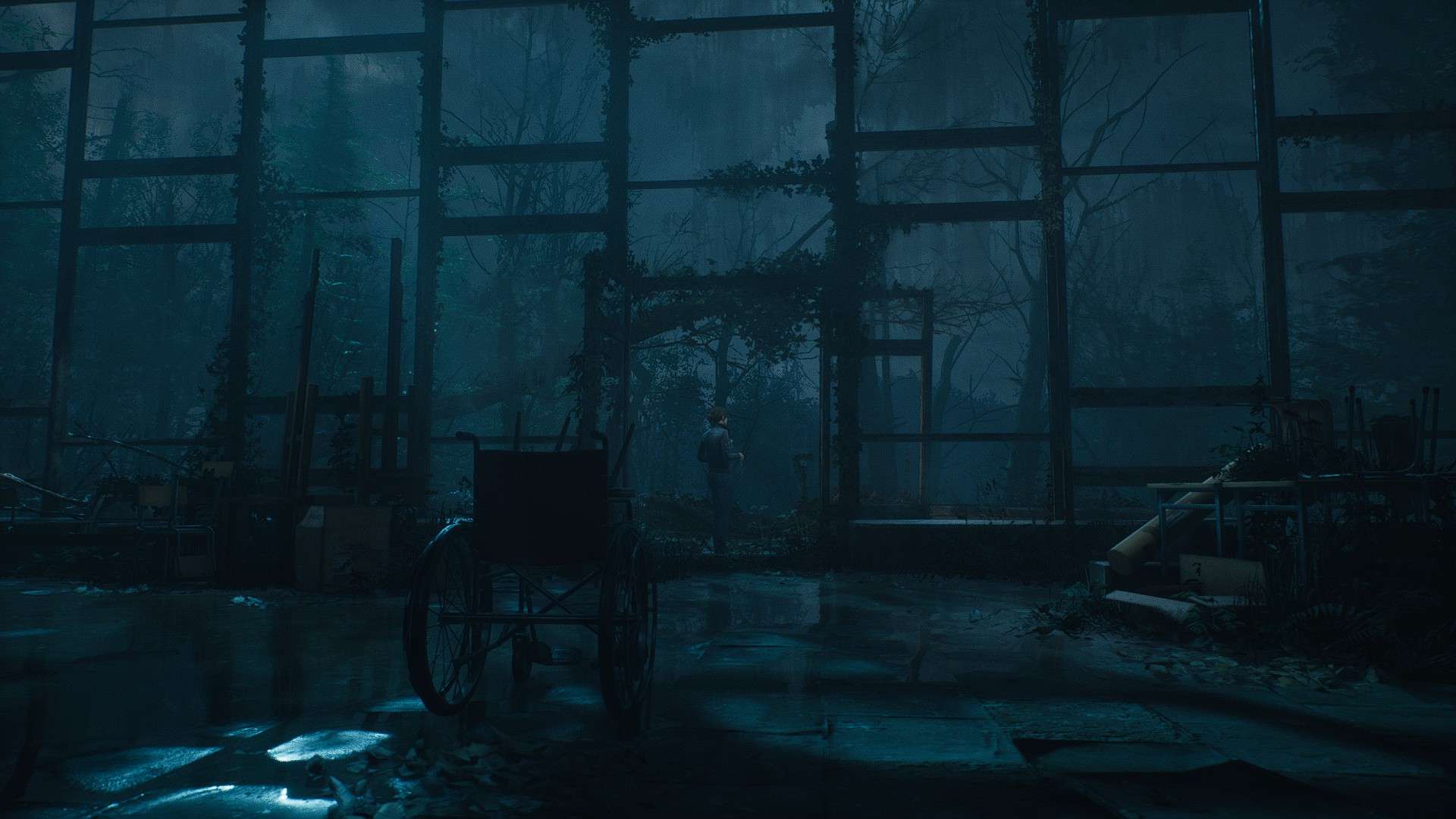
The Medium PC Review
The Medium is Bloober Team’s latest horror title in their current run of producing horror themed games since their entry in the genre with Layers of Fear back in 2016. This is easily the studio’s most ambitious title, both in visual technologies and pushing their way of telling a story, plus it is the Xbox Series X/S first exclusive, so it has a lot riding on it. The Medium might not be a traditional horror in sense of gore and jump scares, this is a game that wants to tell its story through its unique split screen approach mixed with some vintage fixed camera angles that are seen in 90s horror games, such as Resident Evil and Silent Hill.
The protagonist, Marianne, is a special woman who has the ability to travel between two worlds, the living world and the spirit world, acting as the ferryman to let the deceased souls peacefully pass on. This is shown to us as she helps her foster father move on during the prologue funeral. Marianne receives a strange call from someone called Thomas at the end of this, who seems to know of her powers and asks her to come to an old hotel resort called Niwa, a place that was the scene of a horrible massacre many years ago. As a spirit medium, you can only imagine the turmoil such a place would hold, and Marianne begins to unfold the mysteries of the holiday resort and its owner as the story progresses on.

Bloober Team do not stray from what they have become comfortable with in their horror games, and so The Medium remains situated in their love of psychological horror. The story is the reason to play the game, delivering a 7-8 hour adventure that will get you talking about to how things played out, the mystery, the reveals and connections between the characters and the past. The story does not try to be overcomplicated, so by the ending, players will have pieced some idea of what has happened, which is matched with a nice send off and does not feel random. This can often not be the case with some games that try to tell a good story, falling at the last step to connect it all together. The running themes in The Medium cover things like death, guilt, war, jealous, abuse, murder, many things are touched upon that are not do not stray far from real life, even if the game does bring in the element of fantasy with the spirit world and monsters.
I like how The Medium manages to do all this without resorting to gore. I have no quarrel with violence and gore in horror, but if everything was done that way, then it becomes a bit similar across the genre. Going for more of a psychological approach puts more emphasise on the atmosphere, the writing and delivery of the story and themes, reminding me some of the late 90s Japanese horror classics where sound played such a pivotal point in delivering the scare. It is not quite as perfected as those in The Medium, but the writing is good enough to imply some of the more violent imagery without resulting to showing it, making you have strong feelings about certain characters and the interactions you have with them. While we are only early into 2021, I feel The Medium will probably remain one of the better stories of the year.

Helping the story project its imagination onto the player are the game’s wonderful graphics. I mentioned this is an exclusive to Series X/S and PC, and it shows with detailed textures and use of light inside its horrifying environments. Exploring the damaged remains of Niwa holiday hotel and seeing the stunning raytracing visuals add to the atmosphere, giving it a real sense of abandoned despair. The spirit world replaces the human construction of Niwa with human emotions brought into physical manifestation. It does this with a strong use of dreary orange, red and green colour palette, a rotten environment of death. This is where walls are built of bone, skin and flesh, death oozes out of the walls as people are caught stuck in limbo unable to pass on to the afterlife. The spirit world was inspired by Polish artist Zdzisław Beksiński’s otherworldly drawings. A quick Google image search will instantly be met with comparable areas in The Medium. Seeing both the normal and spirit world on screen together done through the horizontal split-screen not only looks enthralling and stylish to witness, but it helps give each room in Niwa its own story to tell, done through brilliantly detailed environment design.
From its initial reveal for The Medium the forefront was always its dual reality split-screen feature. It works wonders for story, enabling the game to produce some cool views, using different angles for each world, and of course there are twists in the tale with it. Even from a gameplay standard point, it manages to get some good use from this to not be a graphical gimmick, such as manipulating the time in the spirit world from the real world that opens up a passage that enables Marianne to disjoint herself from the real world, giving the spirit version of her a short amount of time to freely explore and grab items before expiring and returning back to her real body’s location. Alternative worlds is nothing new in video games, but it is usually a mechanic that requires entering a portal to go to the other dimension, which there is part of that in The Medium with the mirrors, a feature that allows Marianne to go to the spirit world in full force when required for a puzzle (such as to get around something that blocks Marianne in the real world, but is open in the spirit world or vice verse) without the need for the split-screen element to be in play.

That said, the split-screen concept is not used to its full potential. Puzzle fans might be a tad disappointed in what is offer here, as they are simply not challenging. The puzzles are similar to a point-and-click game where Marianne is investigating scenes to find items that can be interacted with, either to feed some history of Niwa through Marianne’s ability to hear passed events through objects. There are only a few puzzle solving requirements that I would class as real puzzles, such as the face atlas that needs shifting around to put the mouth, nose and eyes in the right place. Most puzzles are finding objects or moving the environment to progress blocked areas, as if the developers do not want the game to hinder progression, so the flow of its story and horror elements are always around the corner in a timely fashion.
Which moves me onto the horror element of The Medium. The developers have once again designed a game that does not have any combat, rather, this is game about the environment and discovering what can be interacted with. When you do run into trouble with the game’s main monster, The Maw, a demonic looking beast that has an obsession of chasing Marianne down so that he “can wear her”, it is creepy and does make you tense up during the chase scenes or the parts where Marianne has to sneak pass the monster holding her breath to remain quiet. But when the monster is not around, there is never a sense of danger, so there is nothing to worry about. The game happily alerts the player when The Maw is in game because you can hear his disturbing voice, done by the one and only Troy Baker, who does a brilliant job sounding like a messed up monster who has this unearthly obsession for Marianne’s skin. The Medium‘s musical score is fantastic, composed by a master of the genre, Akira Yamaoka, and it calls upon some of his Silent Hill history with this game. When the soundtrack is in full swing the eeriness of the abandoned resort and the spirit world does make one want to tread carefully, but then you remember that there is no danger here because The Maw is not yet around wanting to get his grubby mitts on you at that point in the story.

Presentation would be immaculate if it was not for the performance issues with the game. It was a title that was advertised as using all the shiny goodness of raytracing and Nvidia’s clever AI deep learning super sampling (DLSS), but optimization is a problem at the moment. Performance with raytracing is dependant with what is going on in the scene. For the most part, I was running using DLSS at low, which kept the frame rate mostly way above 30fps, often 60fps+ apart from a few scenes with a lot of reflection happening, such as the empty swimming pool surrounded by a lot of glass windows, the game really did not enjoy rendering that at 4K resolution. There are also jitters that seem to happen sometimes when transitioning into new areas, as if hiccups with loading or frame pacing. This seems to only happen on Direct X 12, as Direct X 11 is a smoother experience, but then you loose the goodness of raytracing. Hopefully patches will smooth out the performance, but right now it is not the best showcase for fluidity when hitches like this happen.
The Medium is an interesting title to play through, but I think it is fair to say that while the split-screen, dual world element is a fascinating idea, it never truly excels at pushing the idea to its maximum potential. There are teases of what could be done here, but this is no new revolutionary way to play. Taking The Medium as an horror game, it brings a brilliant soundtrack that gives life to its locations with eerie atmosphere, an engrossing story that I wanted to see until its conclusion; the main element people will remember once the dust has settled in. Expect The Medium to be a mixture of uncomplicated investigatory item solving and walking through its striking environment art, a captivating and well presented world that is visually pleasing (or disgusting depending how you look at it), but one world where the scares are scripted to certain parts of the story, which stop any potential for this game to have a truly frightening experience.
